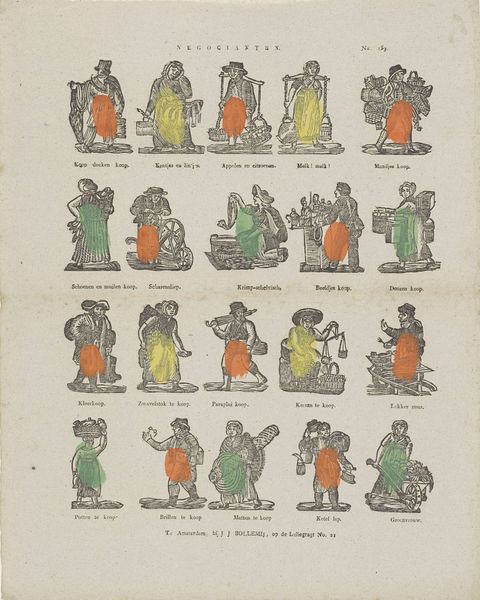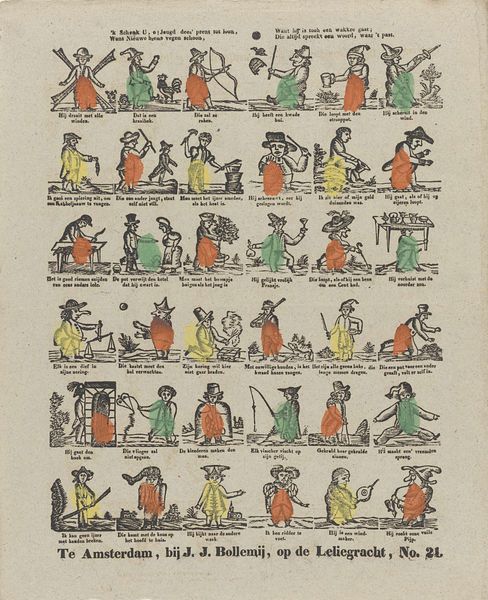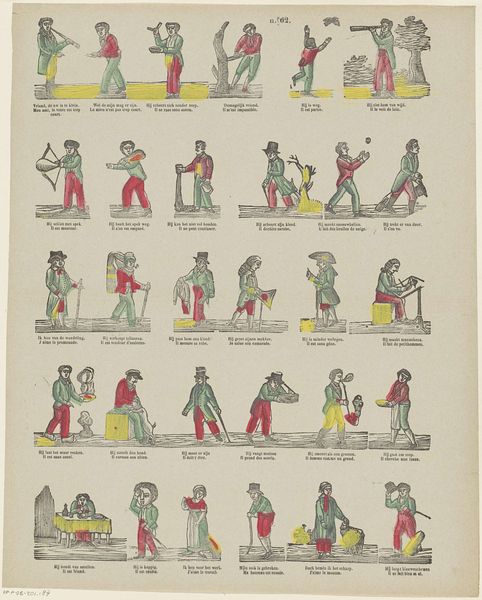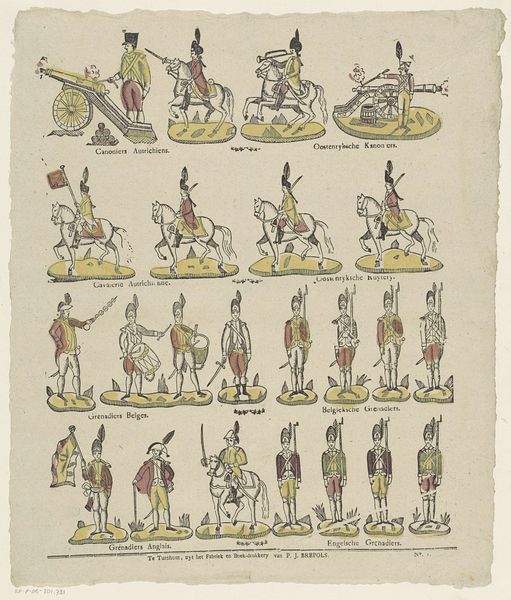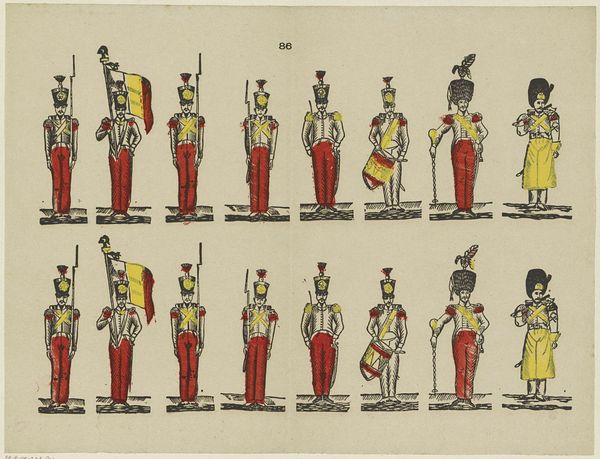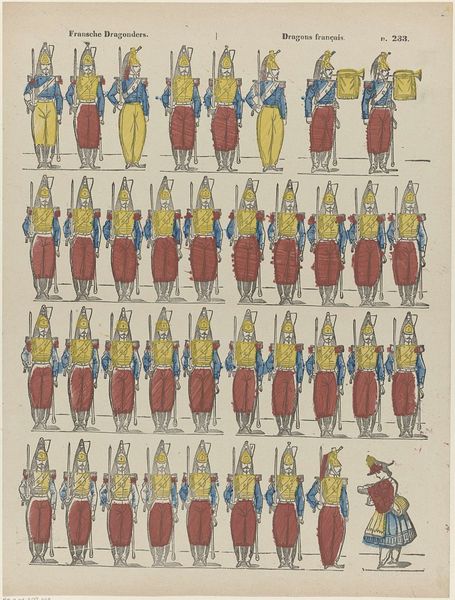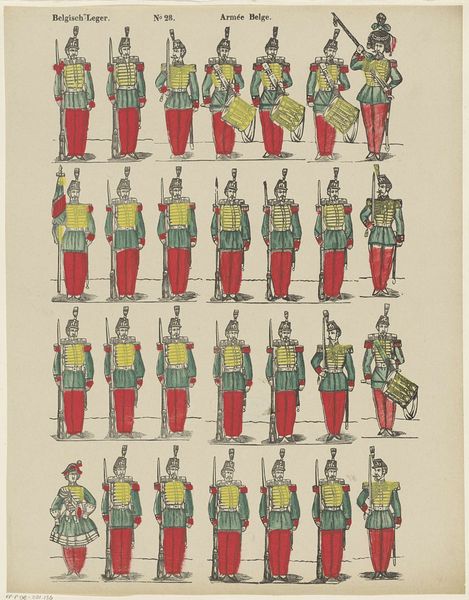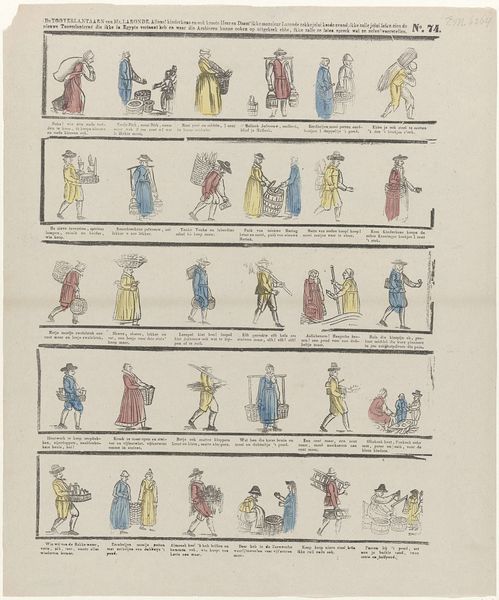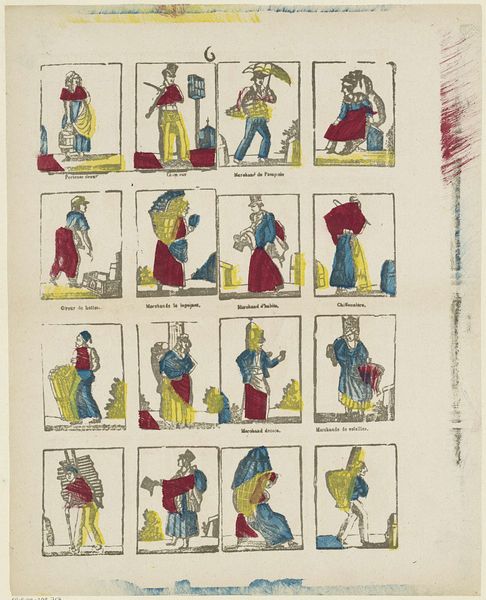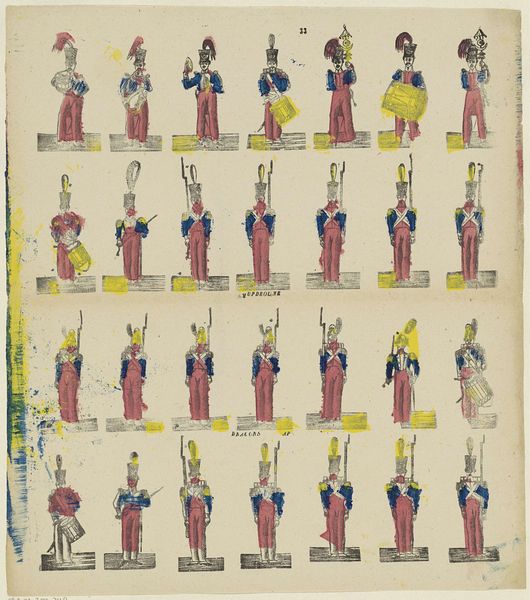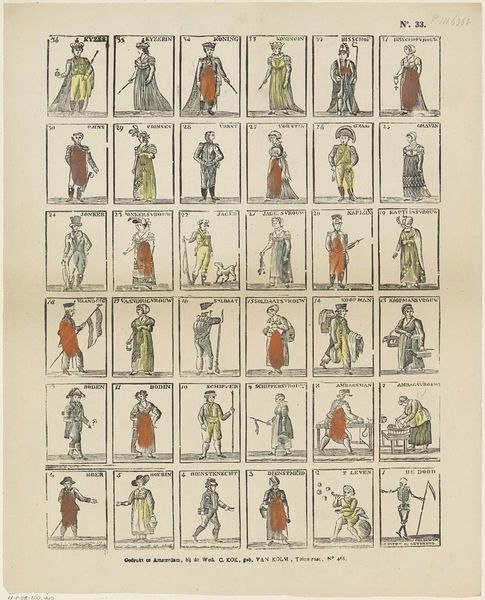
Den ridder Don Quichot en onze Sanche Pansje, / Met het volkje van Chamacho maker hier een dansje 1816 - 1849
0:00
0:00
#
narrative-art
# print
#
figuration
#
genre-painting
Dimensions: height 423 mm, width 339 mm
Copyright: Rijks Museum: Open Domain
Editor: This print, created sometime between 1816 and 1849 by Monogrammist B, is called "Den ridder Don Quichot en onze Sanche Pansje, / Met het volkje van Chamacho maker hier een dansje," housed at the Rijksmuseum. It depicts rows of characters with short captions below each. What really strikes me is the repetitive nature of the figures; they almost feel like a commodity being produced en masse. What's your take on it? Curator: The commodification aspect is key. Consider the material itself – a print. It's inherently reproducible. The creation of multiple copies meant wider distribution and affordability, shifting art away from exclusive patronage. Notice how the figures, though individualized, are simplified, almost cartoonish? Editor: Yes, they definitely lack individual detail; each is more of a character type. Curator: Exactly. It's like a proto-mass-produced image. Also, consider the socio-economic context: the rise of a merchant class and a growing public with access to disposable income. Art became something to be consumed, reflecting broader societal shifts. What about the relationship between the depicted characters and the production of the print itself? Editor: That’s interesting... is the print in some ways enacting the dance the title speaks of, bringing together these disparate figures for mass consumption? I guess the repetitive, almost staged arrangement suggests the act of ‘making a dance,’ perhaps indicating how labor and entertainment were also becoming standardized. Curator: Precisely! This artwork speaks to the material conditions of its creation and consumption. The very act of producing and circulating such images participated in shaping cultural values and tastes. Editor: That makes me look at prints very differently. It’s easy to focus on the narrative, but understanding how they were made and circulated adds another layer of meaning. Curator: Absolutely. Focusing on materials and their social context brings us closer to understanding the artwork’s true value.
Comments
No comments
Be the first to comment and join the conversation on the ultimate creative platform.
